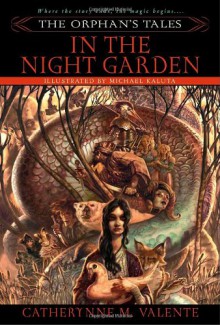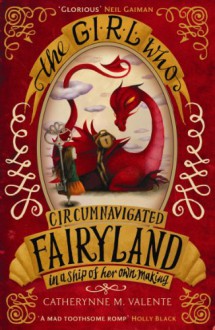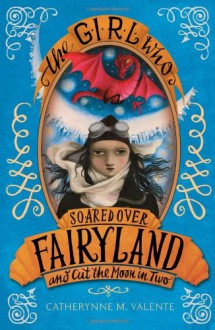
I thought this was a very clever and unique book. At least, I’ve never read anything like it. It tells a lot of stories, I couldn’t say how many, but definitely more than a dozen. However, this is not an anthology. It’s layer upon layer upon layer of related stories nested inside each other.
The framing story is about a lonely girl who people shun because they believe she’s a demon. A curious boy approaches her and, over the course of a few days, she tells him two stories. Each of the two stories takes up about half of the book. Within each story, some of the characters tell other stories. Within those stories, somebody tells another story. These stories often tell the backstory of a particular character, so you’re sort of gaining more and more history, going backwards in time as you go forward in the book. Periodically, the book returns to the higher layers to continue those stories, and then it possibly goes back into the same lower layers to finish incomplete stories there, or else it starts a new inner story with a new set of layers. Some of the different branches were only moderately related, but there were lots of little connections here and there which were fun to watch for.
Sound confusing? It really wasn’t. The first main story never went more than 5 layers deep. The second main story went up to 7 layers deep a couple times. When I first realized the structure of the book, I was a little worried that I would get confused, so I started checking myself each time the story went into a deeper layer, recounting to myself the steps that had led there. I was always able to do so quickly and without confusion, and I think that process helped me keep it all straight in my head. I could see where some people might find this book disorienting, though. For me, it may have helped that this type of thought process is part of my day job as a programmer; I kept making comparisons to it while I was reading. Reading this was kind of like keeping track of the call stack while reading or debugging a program as it progresses forward and backward through layers of subroutines.
The stories all borrow heavily from fairy tales. This was especially noticeable to me since I had read through The Complete Grimm’s Fairy Tales earlier this year. It really isn’t a retelling of any of those stories, but there were lots of little nods, sometimes with similarities and sometimes with twists, and with the tiniest hint of satire. Unlike many of the Grimm’s tales, however, this book was internally consistent, the characters’ actions made sense, and it never felt silly.
I do still have a little bit of Fairy Tale Fatigue from the Grimm’s book though, so that might have impacted my enjoyment of some of the stories. Some layers were more interesting than others, so the book didn’t always hold my interest, which is the main reason I’m not rating it higher.
Next Book
In the Cities of Coin and Spice by Catherynne M. Valente, the sequel to this book.

 Log in with Facebook
Log in with Facebook 









